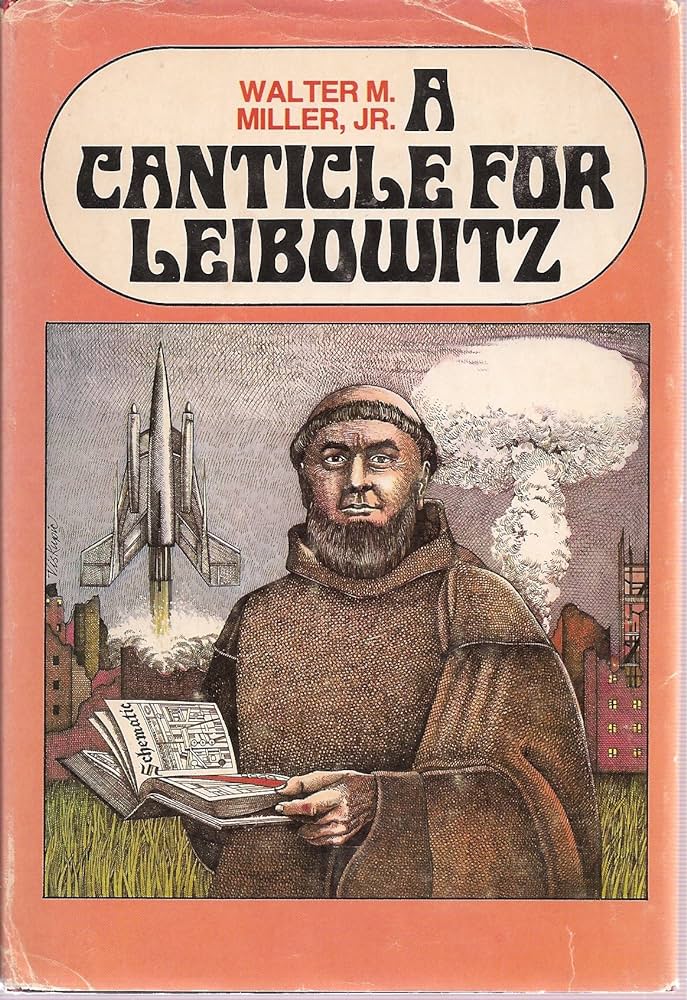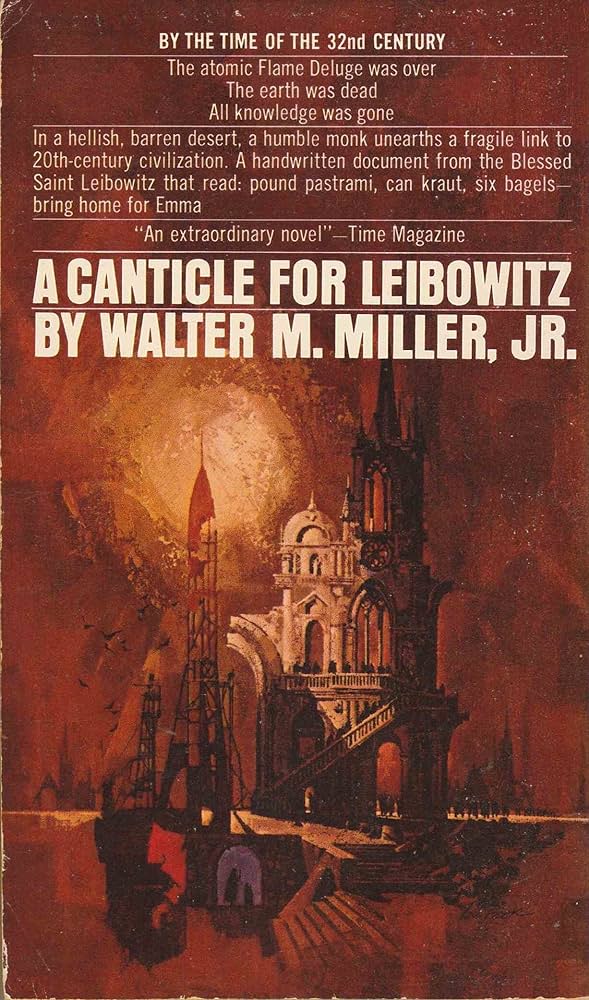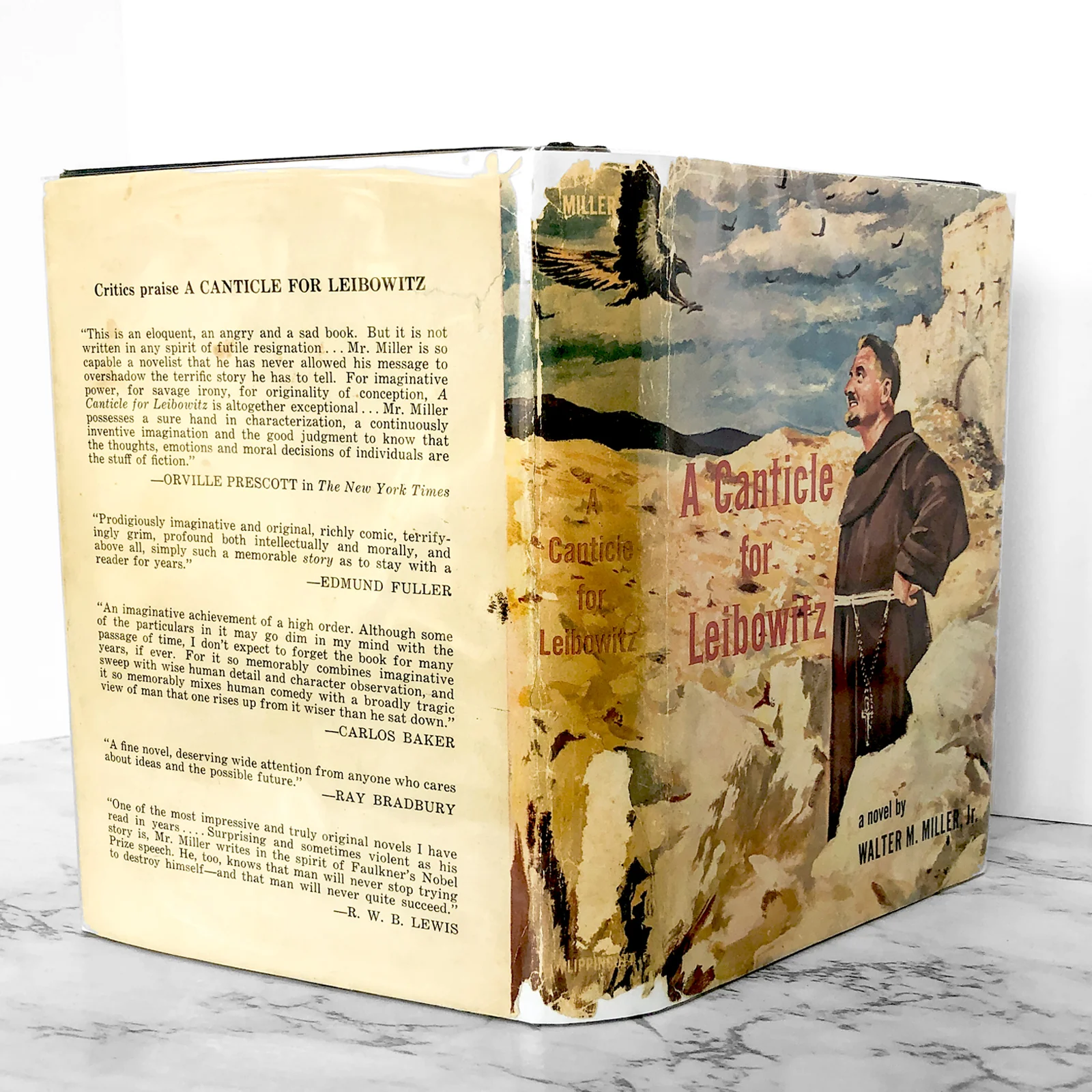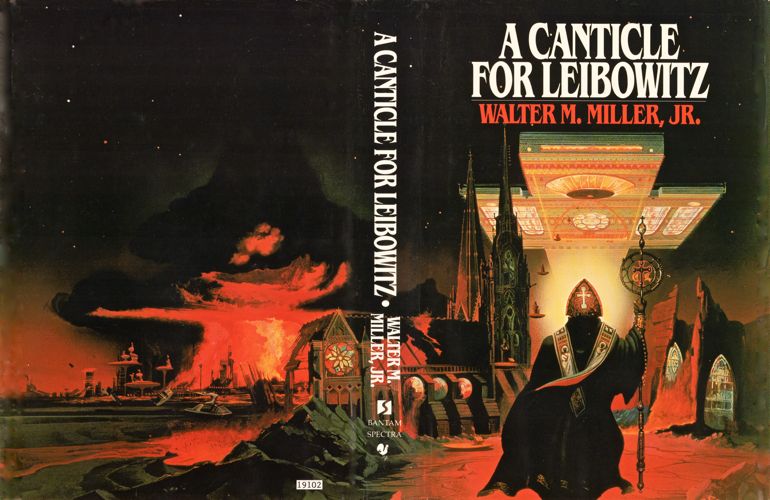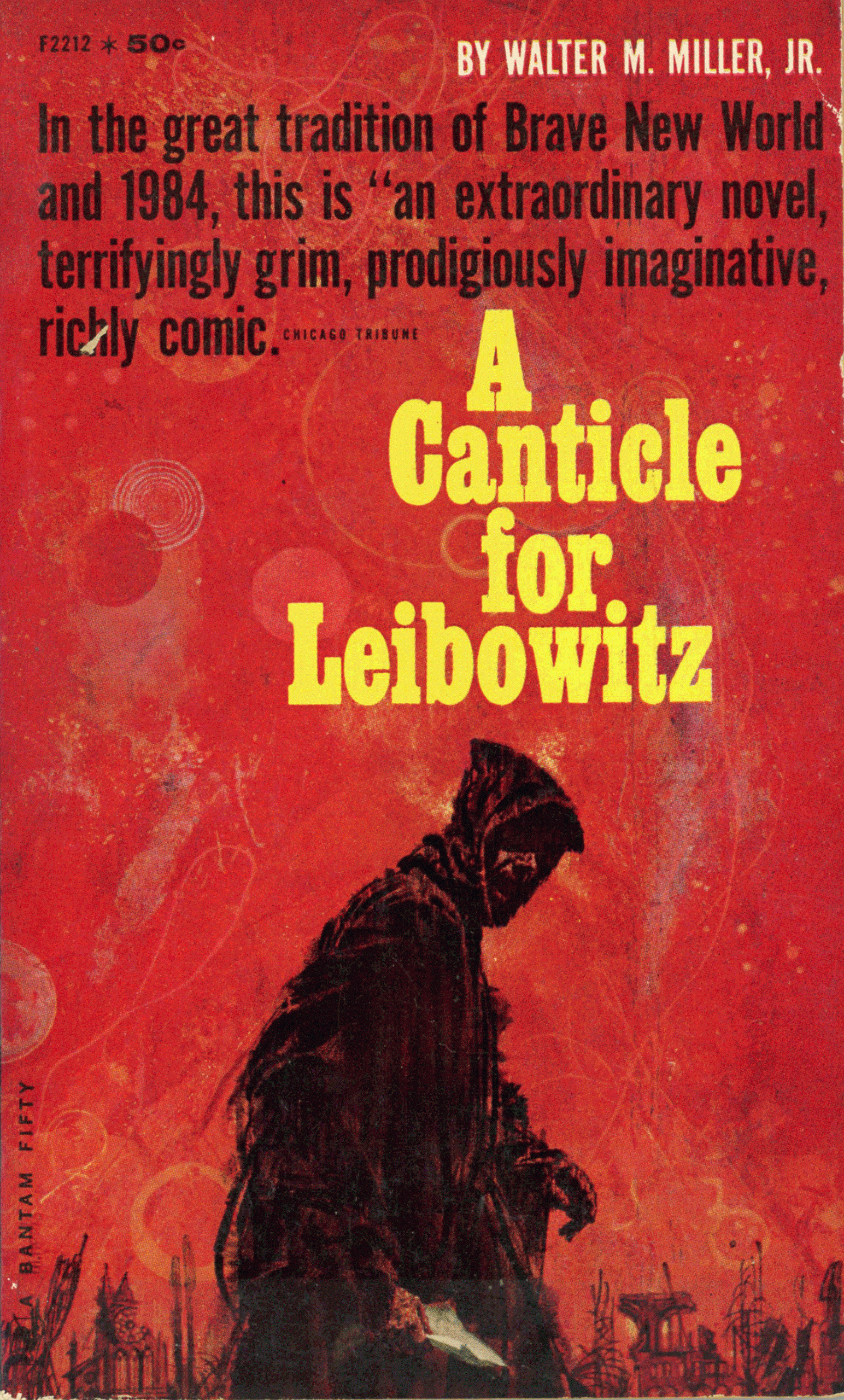SEMIOPUNK (23)
By:
July 16, 2024
An irregular, ongoing series of posts dedicated to surfacing examples (and predecessors) of the sf subgenre that HILOBROW was the first to name “semiopunk.”
BABEL (2022) | BABEL-17 (1966) | CAMP CONCENTRATION (1968) | A CANTICLE FOR LEIBOWITZ (1959) | CAT’S CRADLE (1963) | COSMONAUT KEEP (2000) | THE DIFFERENT GIRL (2013) | DOOM PATROL (1987–91) | THE EINSTEIN INTERSECTION (1967) | EMBASSYTOWN (2011) | ENGINE SUMMER (1979) | EXPLOITS AND OPINIONS OF DR. FAUSTROLL, PATAPHYSICIAN (1911) | FEERSUM ENDJINN (1994) | FLATLAND (1884) | FRIDAY (1982) | LE GARAGE HERMÉTIQUE (1976–79) | THE GLASS BEAD GAME (1943) | GLASSHOUSE (2006) | GRAVITY’S RAINBOW (1973) | THE HAMPDENSHIRE WONDER (1911) | LORD OF LIGHT (1967) | THE MAN WITH SIX SENSES (1927) | THE MOUNTAIN IN THE SEA (2022) | NINEFOX GAMBIT (2016) | ODD JOHN (1935) | PATTERN RECOGNITION (2003) | THE PLAYER OF GAMES (1988) | RIDDLEY WALKER (1980) | RODERICK (1980–83) | SNOW CRASH (1992) | THE SOFT MACHINE (1961) | SOLARIS (1961) | THE SPACE MERCHANTS (1953) | THE THREE STIGMATA OF PALMER ELDRITCH (1964) | TIME OUT OF JOINT (1959) | UBIK (1969) | VALIS (1981) | A VOYAGE TO ARCTURUS (1920) | VURT (1993) | WHITE NOISE (1985).
A CANTICLE FOR LEIBOWITZ
Some 600 years after a nuclear apocalypse (the “Flame Deluge”), followed by a reaction against science, technology, and education in general (the “Simplification”), has plunged humankind into a new Dark Age, we encounter the inhabitants of an isolated monastery in the desert of the southwestern United States: the oddly named Order of Leibowitz.
These humble, devout, industrious Catholic monks — their home a serene haven in a world of radiation-warped mutants (“Simpletons”) scrabbling to eke a living out of the wasteland — have dedicated their lives to preserving, recopying, and illuminating the pre-apocalyptic books and documents that their patron saint, the weapons engineer and booklegger Isaac Leibowitz, heroically preserved from the Simplification. The monks’ inability to comprehend these relics, which they regard as sacred but which we recognize as secular, provides the reader with an exegetical experience that is at once darkly amusing and deeply tragic.
I wouldn’t go so far as to say that this Golden Age sf novel (published in 1959) originated the conceit of future archaeologists, historians, and scholars puzzling over fragments of 20th-century Western culture. We find the Russian Symbolist poet (and Radium Age proto-sf author) Valery Bryusov, for example, depicting just this sort of thing (rather gleefully) in his 1899 poem “The Days Shall Come of Final Desolation”. Jack London’s The Scarlet Plague (1912), Edward Shanks’s The People of the Ruins (1920), Cicely Hamilton’s Theodore Savage (1922), and Edgar Rice Burroughs’s The Moon Maid (1926) are Radium Age precursors of Miller’s story; while sf’s so-called Golden Age would give us, for example, George R. Stewart’s Earth Abides (1949), Ray Bradbury’s Fahrenheit 451 (1953), Leigh Brackett’s The Long Tomorrow (1955), John Wyndham’s The Chrysalids (1955), and Brian Aldiss’s Non-Stop (1958).
Yet the way Miller frames the story — monks cheerfully and optimistically preserving texts they can’t comprehend (and which could lead to disaster), a Catholic monastery founded by a Jewish engineer, the vivid descriptions of the desert landscape, mysterious (miraculous?) goings-on, the religious terminology, ecclesiastical politics — is charming. A Canticle for Leibowitz is one of the handful of Golden Age sf novels that helped the genre go mainstream; its reputation is richly deserved.
The book’s Part 1, “Fiat Homo”, was adapted from “A Canticle for Leibowitz,” a short story published in The Magazine of Fantasy and Science Fiction (April 1955). Francis, a bumbling novice, discovers a fallout shelter used by Leibowitz — a former Los Alamos engineer killed (“martyred”) for his efforts to safeguard scientific knowledge during the Simplification. For Francis’s fellows at the Leibowitzan Order, the contents of the shelter are nothing short of momentous. They collect, and begin to transcribe, what they call the “Leibowitz Memorabilia.” Leibowitz is elevated to sainthood by the Church, thanks to Francis’s discovery; alas, having journeyed to New Rome to witness the canonization, Francis is killed by mutant tribesmen on his way home.
It’s a terrific story, full of nice details — the calm of the monastery’s cloisters, the books preserved in sealed barrels, the roving mutants. What appeals to this semiotician, of course, is the monks’ halting exegesis of Leibowitz’s memorabilia — technical documents, circuit diagrams, even a shopping list. One has to laugh at the situation. Francis himself spends months toiling over an an illuminated manuscript of a Leibowitz blueprint titled “STATOR WNDG MOD 73-A 3-PH 6-P 1800RPM 5-HP CL-A SQUIRREL CAGE.” What a colossal waste of effort, what misplaced faith! The irony is rich. And yet… the reader is moved. The unintended consequence of the monks’ acts of religious devotion is the preservation of scientific knowledge — some of it much more momentous, as we’ll discover, than a “squirrel-cage” induction motor.
Puzzling over cultural fragments that we cannot immediately comprehend, yet diligently — even faithfully — sticking with the long, arduous process of decoding and reassembling, in expectation of eventual “illumination”… sure, yes — there is something monk-like about semioticians’ work.
Part 2, “Fiat Lux,” adapted from “And the Light is Risen” (a novella published in F&SF in August 1956), takes place in the 32nd Century. At this point humankind has emerged out of the Simplification. Resurgent secular scientists are feuding with the information-hoarding Church over the control and distribution of technology. Powerful city-states (Denver, Texarkana, Monterey) run by warlords play both sides off against each other. It’s the Renaissance all over again, in other words.
Thon Taddeo, a prominent scientist, visits the monastery, where he is amazed to find that one of the monks has created a working electric light, powered by a treadmill. Taddeo believes the Leibowitz Memorabilia will lead him to breakthroughs in his work, but the abbot refuses to let him remove items from the library back to Texarkana. Meanwhile, the abbey narrowly avoids being used as a military base for an attack on Denver.
Part 3, “Fiat Voluntas Tua” (adapted from “The Last Canticle,” a novella published in F&SF in February 1957) is set in 3781. The Leibowitzan Order’s mission has expanded to the preservation of all knowledge. Space travel between earth and distant colonies has become common. Humankind is once again a highly technological species… but, frustratingly, nuclear apocalypse once again looms. A war between the Atlantic Confederacy and the Asian Coalition threatens not only humankind but all life on Earth.
I’ll leave you in suspense about what happens from there.
PS: A Canticle for Leibowitz (1959) won the Hugo for Best Novel.
PPS: The author, who committed suicide in 1996, served in the Air Force during WWII as a radioman and tail gunner. He took part in the bombing of the Benedictine Abbey at Monte Cassino, which — he’d realize, at some point, while writing this book, had been haunting him ever since.
JOSH GLENN’S *BEST ADVENTURES* LISTS: BEST 250 ADVENTURES OF THE 20TH CENTURY | 100 BEST OUGHTS ADVENTURES | 100 BEST RADIUM AGE (PROTO-)SCI-FI ADVENTURES | 100 BEST TEENS ADVENTURES | 100 BEST TWENTIES ADVENTURES | 100 BEST THIRTIES ADVENTURES | 75 BEST GOLDEN AGE SCI-FI ADVENTURES | 100 BEST FORTIES ADVENTURES | 100 BEST FIFTIES ADVENTURES | 100 BEST SIXTIES ADVENTURES | 75 BEST NEW WAVE SCI FI ADVENTURES | 100 BEST SEVENTIES ADVENTURES | 100 BEST EIGHTIES ADVENTURES | 75 BEST DIAMOND AGE SCI-FI ADVENTURES | 100 BEST NINETIES ADVENTURES | 75 BEST HADRON AGE SCI-FI ADVENTURES.

